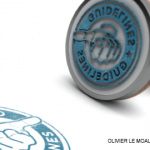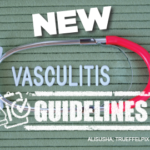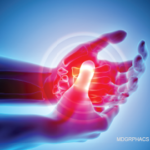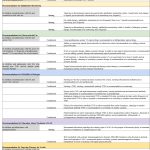
wavebreakmedia / shutterstock.com
In 2004, the British Medical Journal published an article titled, “Resisting Cookbook Medicine,” which looked askance at the “routine use of predetermined directives” in clinical practice because it reduced doctors to practicing so-called cookbook medicine and eroded the art of medicine.1 Fast forward 15 years, and we find our appetite for “predetermined directives”—what we now call evidence-based practice guidelines—has never been greater. What changed?
Many things have changed, as we all know—not the least of which has been the exponential rise in medical knowledge, as demonstrated by a couple of staggering metrics: More than 25 million references to journal articles in the Medline bibliographic database and about 500,000 records added to PubMed each year.2,3 With so much information that is searchable and, seemingly, knowable, who really has the bandwidth to process it all? How do we expertly and comprehensively compare and weigh all the published evidence in our clinical decision making? The development of practice guidelines helps fill this growing need and support us in providing the best, state-of-the-art, evidence-based care for our patients.
To borrow from the old African proverb, the development of practice guidelines “takes a village.” At the ACR, our Committee on Quality of Care brings together such a village for the rigorous process of guideline development. It starts with carefully choosing the disease state for which a clinical guideline will be developed, with a focus on the major diseases we treat across the span of our specialty: rheumatoid arthritis, osteoarthritis, juvenile idiopathic arthritis, axial spondyloarthritis, gout and psoriatic arthritis, among others.4
The Process
For each disease, a guideline development group is assembled comprising up to 40 individuals and including content experts, methodologists, clinicians, patients and a literature review team. Once this group is convened, it adheres to the GRADE methodology for guideline development.5 GRADE, which stands for Grading of Recommendations, Assessment, Development and Evaluation, is currently the most widely accepted and used guideline methodology. Under GRADE, the key first step is to develop the PICO questions that must be answered in each of the final guideline recommendations, based on available literature. The PICO questions are formulated to identify each component of its acronym, namely: Which population? What intervention? Which comparator? And finally (and most importantly), what outcome?
Once the PICO questions are agreed upon, the literature review team begins its work, diligently reviewing all available evidence for the clinical questions identified within the specified disease or clinical domain. Initial searches often yield thousands of potentially relevant papers, which are screened to create a smaller list of included papers, which are then evaluated for scientific rigor. Data are extracted and summarized for each critical or important outcome listed for each question.
The published evidence is considered in the context of the development team’s experience and expertise, as well as patient values and preferences. A voting panel, with help from a GRADE methodologist to ensure the integrity of the process, evaluates the overall quality of the evidence and the balance between desirable and undesirable effects, while factoring in the subjective component of patient and clinician values and preferences. The final recommendations are always reported as either “in favor” or “against” the intervention, and then further qualified as strongly or conditionally recommended on the basis of all the factors considered.
Benefits & Drawbacks
One of the huge advantages of the GRADE methodology is the high degree of transparency it affords the diverse group of guideline developers—as well as to the eventual guideline users—about the evidence upon which a recommendation is based.
Explicitly including considerations about the benefits vs. harms of a treatment option and the values and preferences of patients and clinicians in the decision-making process also sets GRADE apart.
Of course, one disadvantage of employing such a rigorous methodology is that this process is simply not nimble. It takes almost two years from inception to final approval for publication to develop a set of ACR guidelines. Looking ahead, we hope to find ways to shorten this timeline without sacrificing quality.
Our ACR guidelines are strengthened by partnerships with other professional societies and patient groups, including the Arthritis Foundation, the National Psoriasis Foundation, the Spondylitis Association of America and the Spondyloarthritis Research and Treatment Network, which help us develop and later disseminate the final guideline product widely.
Guideline Publication
Right now, dissemination of ACR guidelines occurs primarily through journal publications and by posting the guidelines on the ACR website.4 We also make every effort to present guidelines from the podium during the ACR Annual Meeting, almost always to overflow audiences. This exuberant attendance speaks to the level of demand for guidelines from a trusted source.
In addition, convenient pocket cards for each new ACR guideline are developed. And most recently, the ACR has developed an app featuring several of our guidelines, with more to come. The ACR Guideline & Criteria App is free and easy to download on a smartphone from the Apple App Store or Google Play.
That all said, the greatest asset we have in the ACR’s guideline efforts is the people involved, our village of guideline developers. Who are these incredible people? They are our volunteer clinicians and researchers, as well as the patients, who work in strong partnership with our staff and others contracted to do this important work for our members. The thoughtfulness and care they bring to the process ensure that it is systematic in its execution and that the resulting product is credible and unbiased.
We have come to embrace guidelines not because we, in rheumatology, will ever abandon the art of medicine in the care of patients with rheumatic disease. Rather, guidelines allow us to more effectively manage the vast amount of science that has changed our field and incorporate into our practice with greater assurance and ease some of the most important advances to improve the care of our patients with rheumatic disease.
 Paula Marchetta, MD, MBA, is a rheumatologist in New York City and the CEO and managing partner of Concorde Medical Group, a multi-specialty private group practice affiliated with NYU Langone Health. She teaches at NYU School of Medicine, where she is a clinical professor. Dr. Marchetta is the 82nd ACR president.
Paula Marchetta, MD, MBA, is a rheumatologist in New York City and the CEO and managing partner of Concorde Medical Group, a multi-specialty private group practice affiliated with NYU Langone Health. She teaches at NYU School of Medicine, where she is a clinical professor. Dr. Marchetta is the 82nd ACR president.
References
- Genuis SJ, Genuis SK. Resisting cookbook medicine. BMJ. 2004 Jul 17;329(7458):179.
- Medline: Description of the database. U.S. National Library of Medicine.
- PubMed. Wikipedia.
- Clinical practice guidelines. American College of Rheumatology.
- GRADE.



